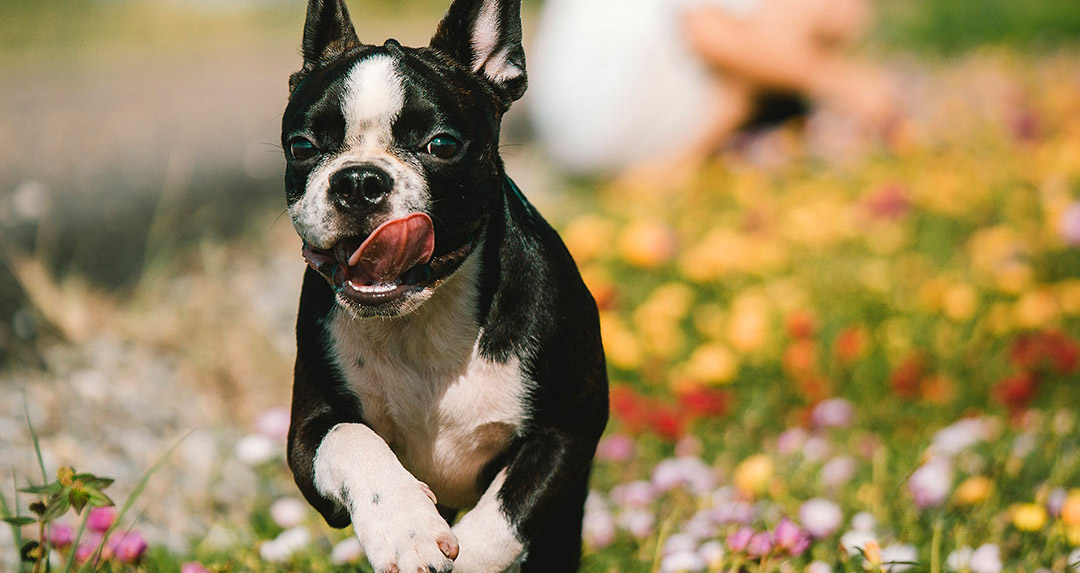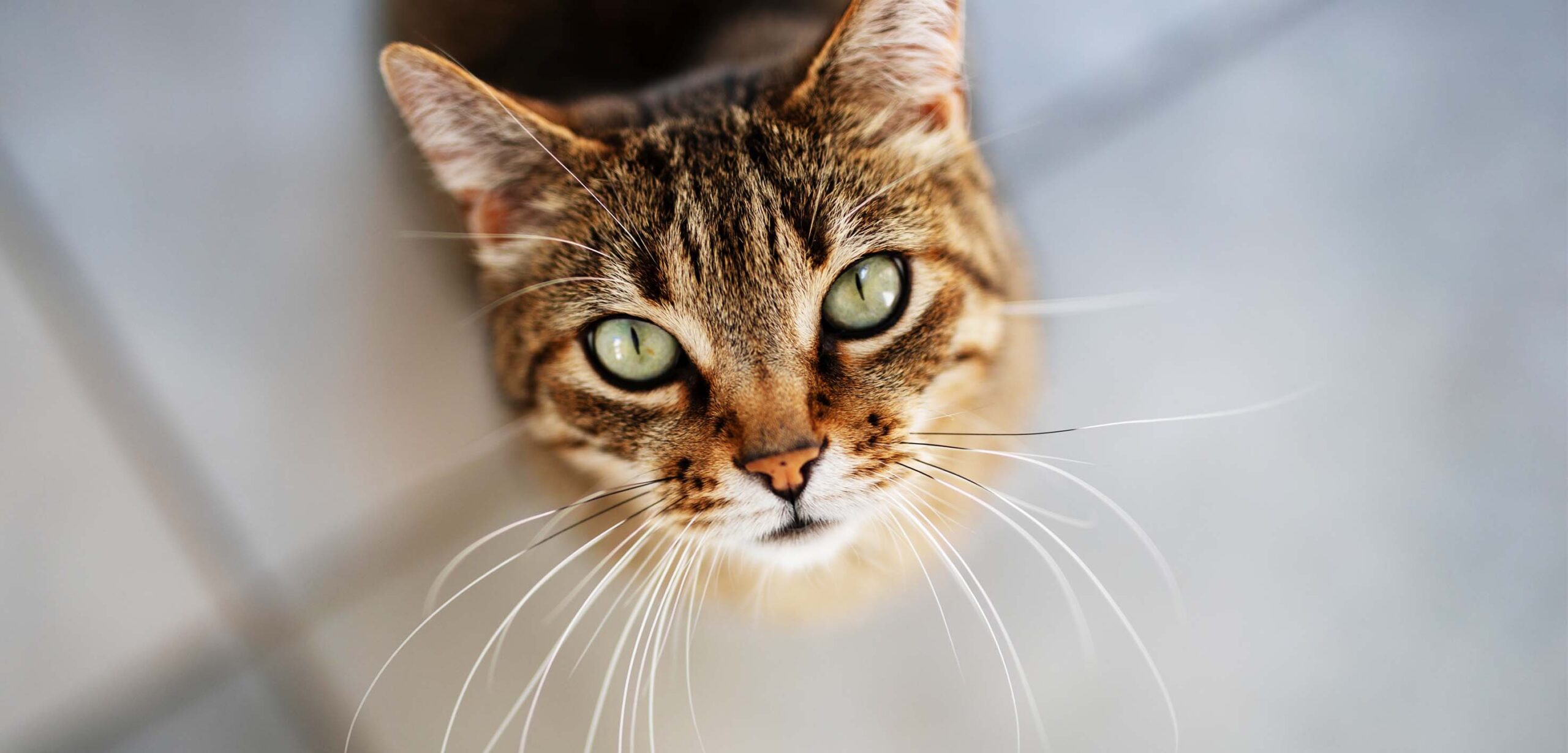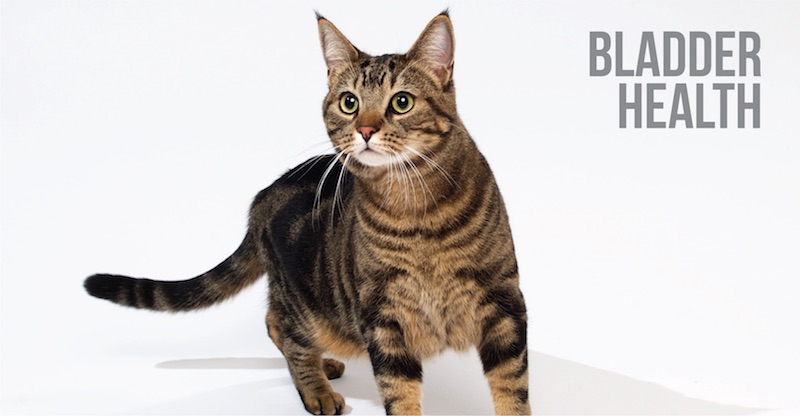
How It All Begins:
- An animal eats some food
- The animal’s body digests the food
- Through digestion, the food is absorbed into the blood stream
- The process of digestion causes the liver to produce ammonia, which combines with other elements in the body (like carbon, hydrogen & oxygen) creating a by-product called urea nitrogen
- The kidney concentrates the urea nitrogen and excretes it into the bladder as urine
- The urine is stored in the bladder until it’s eliminated (on some grass, in the litter box, or—god-forbid—on the new carpet)
In the urinary storage bin we call a bladder, environment is critical in minimizing the growth of bacteria (which ultimately are what cause infections). The optimal urinary environment is achieved through balanced pH levels—the chemical indicator of acidity. If you remember anything from 10th grade chemistry, you’d recognize the terms “acidic” and “basic”. Solutions with a pH level less than seven are considered acidic, and solutions greater than seven are alkaline or basic. Water comes in neutral at exactly seven. Here’s where your pets should fall on the pH scale (and where a couple other things fall for reference):

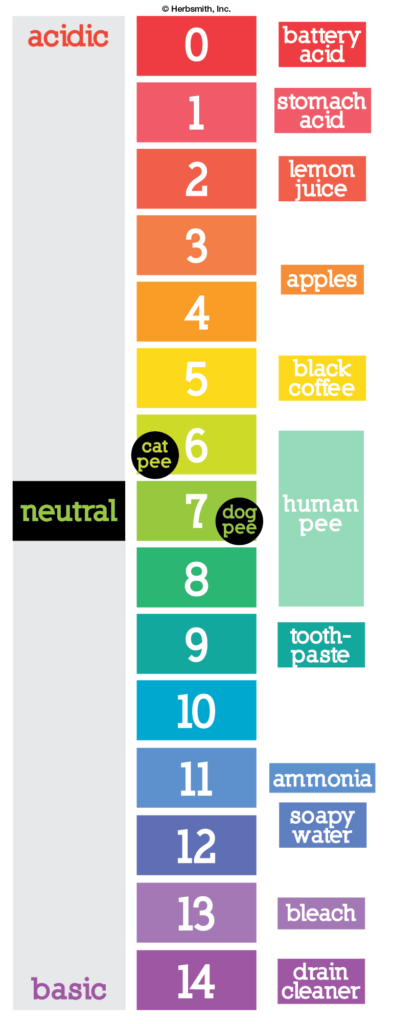
Lemon juice and battery acid have extremely acidic properties, while bleach and soapy water have very alkaline (or basic) properties. Compared to these solutions, your pet’s pee is pretty close to water (no matter how much you complain about it smelling like ammonia).
Cats should be at around a 6.3 – 6.6 (slightly acidic)
Dogs should be at around a 7.0 – 7.4 (slightly alkaline)
In comparison to our pee (that would be human pee, to clarify), our position on the scale actually ranges from mid-sixes to eights. We wake up with slightly acidic pee (6.5 – 7.0) and, as we eat and drink things throughout the day (and as the liver produces more ammonia—a basic solution—as a result), our pee steadily becomes more basic toward the end of the day (7.5 – 8.0). Then, it resets back to acidic as we sleep, as we don’t typically eat or drink while we’re unconscious.[footnote_anchor url=”url1″ number=”1″ text=”Though unrelated to our bladder health discussion, there is an interesting phenomena called NSRED (Nocturnal Sleep-Related Eating Disorder) in which a person gets up in the middle of the night to prepare and consume food, without having any recollection of doing so.”]
When pH Levels Become an Issue
Changes in pH in either direction (too acidic or too alkaline) are a problem. Certain bacteria and crystals can develop and survive better in certain pH ranges, which can open the door to infections. Urinary tract infections (UTIs) occur when bacteria invades the urinary tract, creating damp heat (or inflammation) in the bladder. This inflammation can lead to UTIs, urinary obstructions, or prostate inflammation, depending on the pH level of the bladder environment. Bad bacteria on the skin or in the GI tract can find its way to the urinary tract, and improper diet can actually help this bacteria survive, as it contributes to the damp heat in the bladder.
Urinary obstructions are crystals or stones in the urine. Struvite crystals are the most common form of crystalluria in dogs and cats. They can congeal into struvite stones, which block the urinary tract (and are almost impossible to pass). Struvite stones are composed of magnesium, ammonium, and phosphate, and are primarily caused by high dietary magnesium (which will get into down below). Struvite crystals thrive in high-pH (alkaline/basic) environments. Cranberry is great for acidifying urine and decreasing the presence of struvite crystals. Calcium oxalate crystals and stones, however, thrive in low-pH (acidic) environments. So, over-acidifying urine in order to prevent struvite crystals can actually invite a different type of crystal & stone. Moderation is everything.
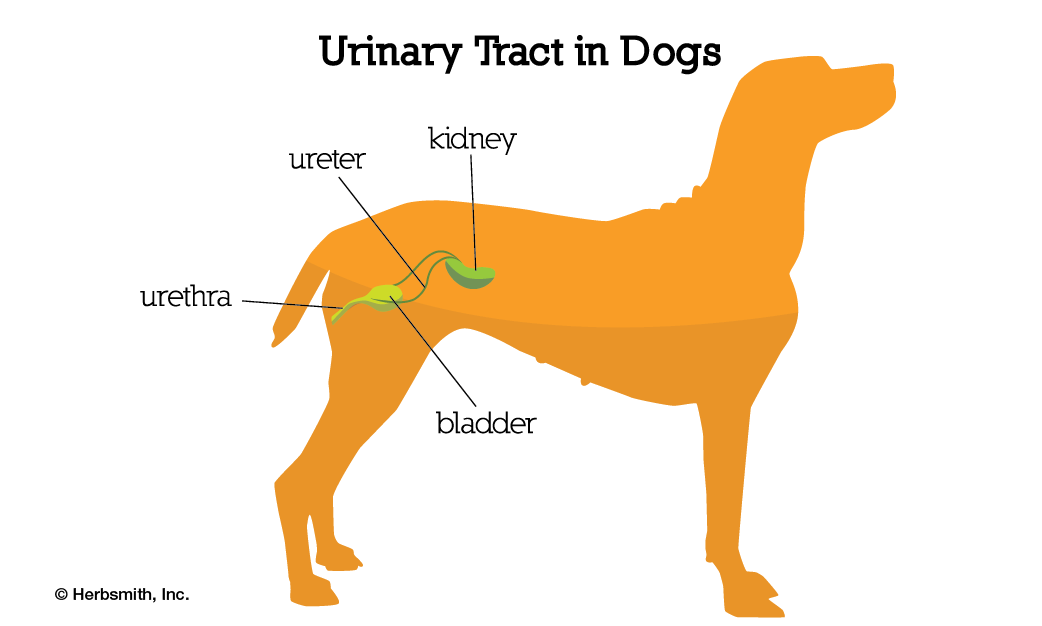
A dog’s pee should be very close to neutral: a light yellow color if you’re visually-wired (though we should note that, while less color is better, dog urine should not be consistently clear, as this could signal that your dog is over-hydrated). Because dog urine tends to fall just above neutral, they are more at risk for struvite crystals and stones, as these thrive in alkaline environments.
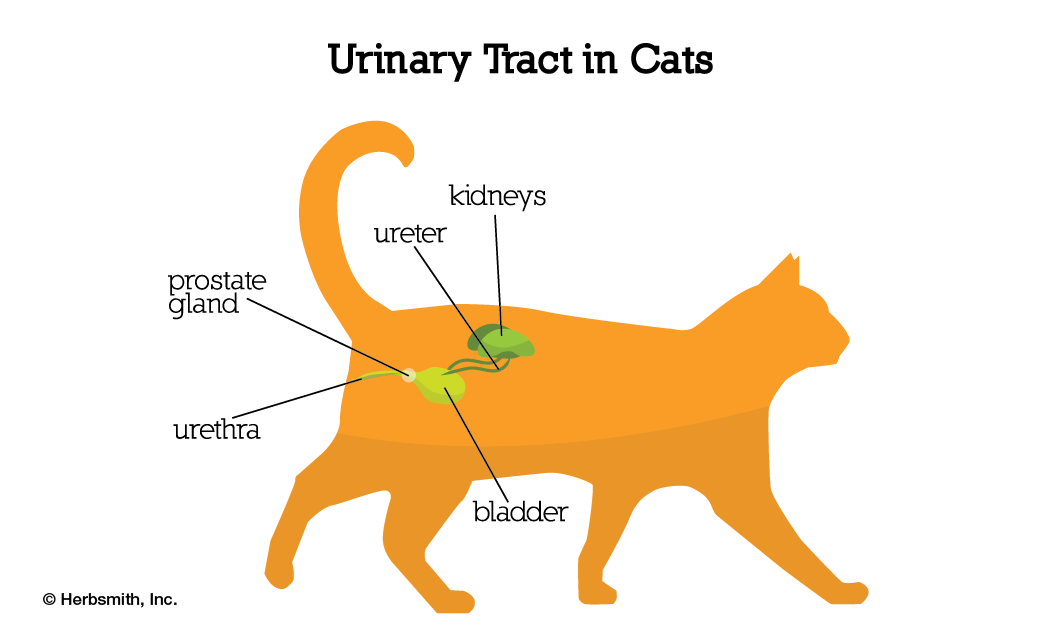
Cats are often especially prone toward UTIs. Their increased risk for UTIs is partially due to their anatomy, but can be greatly impacted by their diet. Diet is really an issue for cats who are consistently fed commercial dry food, as it does not provide an adequate amount of moisture. Dehydration is often grounds for cat urine to become too concentrated, and therefore, too acidic or too alkaline. Adding moist food to their daily diet can help combat the chronic dehydration often seen in cats, also helping to combat the formation of crystals. As an obligate carnivore, a cat would receive most of its moisture from its prey. In fact, the thirst center in the brain of a cat is not nearly as active as in a dog’s. Because of this, it’s important to give your cat sources of moisture outside of just her water bowl.
Beyond a healthy diet, cats can be at higher risk toward UTIs simply because of their anatomy. Male cats, because of their long, narrow urethras, are more prone to urinary obstructions.
Nutrition Plays a Huge Role!
A pet’s nutrition is what supports organ function throughout the body, and the proper diet can make all the difference (it may seem like we say this phrase all the time, but that’s only because we say this phrase all the time. Diet really does make a difference!). Dietary magnesium is considered one of the main contributors to urinary struvite formation. The excessive amounts of grains and carbs in most generic dry pet food brands make it high in magnesium. (Contrarily, meat-based diets are high in phosphorus, which decreases urinary excretion of magnesium and can prevent stone formation). Especially for a carnivore, a diet low in magnesium and high in phosphorus promotes healthy bladder and urinary function.
(Pro-tip: Meat-based diets don’t have to require a ton more work than generic kibble. There are lots of great options out there that are meat-based with minimal grains & carbs and are still just as easy to feed. Freeze-dried raw foods are often meat-based, and are much better for your pet in the long run.)

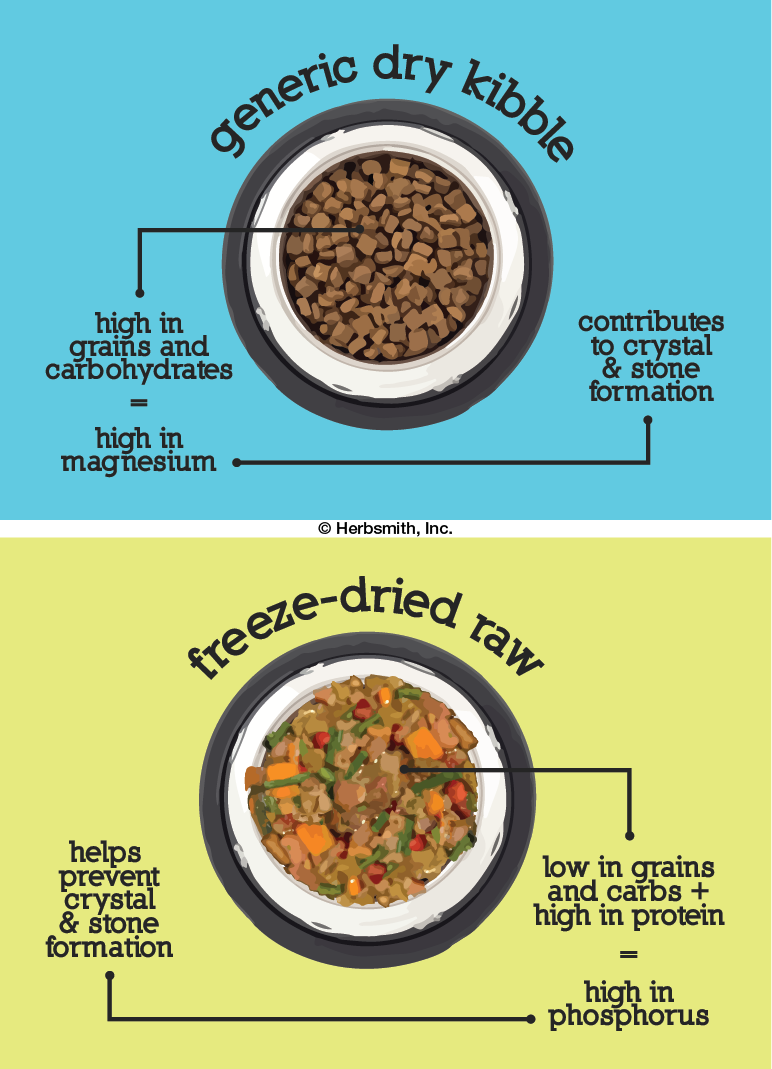
In addition to a proper diet, we also have are a few herbal recommendations (I mean, we are Herbsmith) for combatting bladder infections:
- Plantago Seed: promotes healthy bladder function, drains damp heat & can calm urination discomfort
- Talcum Powder: drains damp heat & calms urination discomfort
- Rush Pit: clears heat from body, has mild diuretic properties
- Polygonum Root: draining & cooling abilities
- Dianthus: draining & cooling abilities
- Gardenia: draining & cooling abilities
- Licorice Root: draining & cooling abilities
- Cranberry: acidifies urine to create an unfavorable environment for bacteria
- Rhubarb Root: empties systems of waste, high fiber content to support colon function & bowel movements
- Akebia: draining & cooling abilities, eliminates damp heat, promotes healthy urination
Combatting Urinary Infections Naturally
85%-90% of UTIs are from E. Coli bacteria. E. Coli has a fringed border (which allows it to attach to the bladder wall) helping it to avoid excretion with urine. Proanthocyanidins (one of the active ingredients in cranberries) attach to the E. Coli’s fringed border, effectively preventing it from attaching to the bladder wall. D-Mannose is also used to support bladder health. It’s a long-chained sugar that allows bacteria to hitch a ride on its long body as it travels through the urinary tract. Once attached, the bacteria are eliminated through urination along with the D-Mannose.
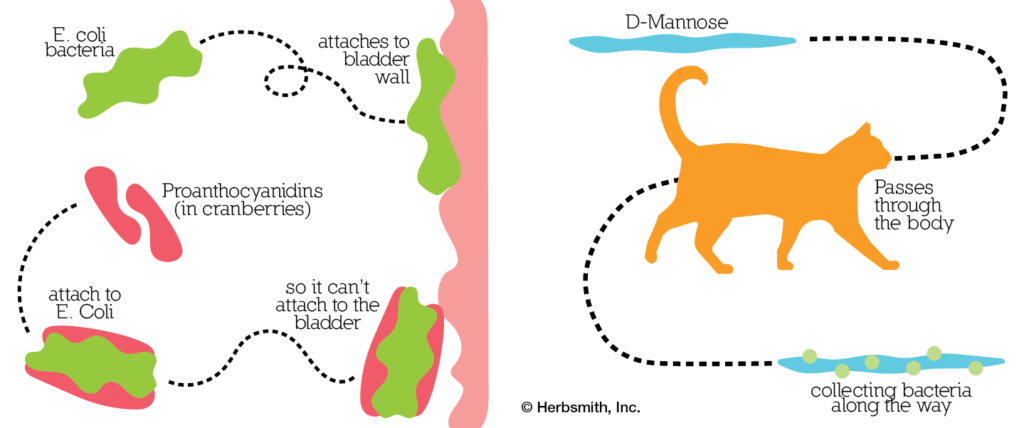
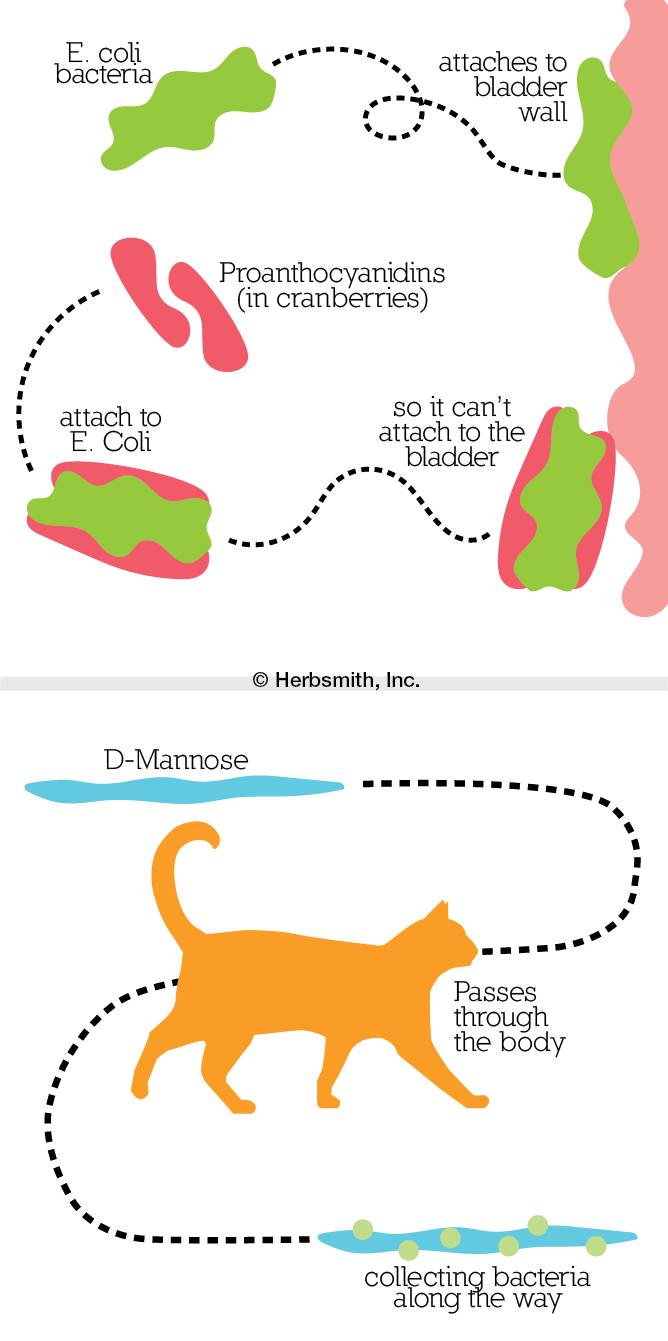
1. Though unrelated to our bladder health discussion, there is an interesting phenomena called NSRED (Nocturnal Sleep-Related Eating Disorder) in which a person gets up in the middle of the night to prepare and consume food, without having any recollection of doing so. [footnote_link url=”url1″]

